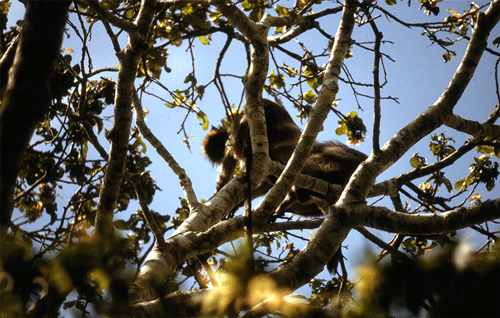How my book Primate Taxonomy was conceived
 |
|
Tana River red colobus in high canopy. Photo credit: Jean-Claude Bacchiana. |
By Colin Groves
Emeritus Professor, Australian National University, Canberra
The controversies about the nature of species really flared up during the 1990s. In 1989, in writing a book called A Theory of Human and Primate Evolution, I had been happy to take the Biological Species Concept (BSC) as something to be assumed, although I was somewhat uneasy in dealing with allopatric “subspecies”, and at applying the concept of species in the fossil record. But during the 1990s, I read further into the matter, and came to the realisation that the Evolutionary Species Concept was what acknowledged the real existence of these biological units, which the BSC did not, and that the Phylogenetic Species Concept enabled one to make the recognition of a species into a scientific hypothesis, which again the BSC did not.
I think the penny may have dropped in the mid-1990s when I was corresponding with Anthony Rylands about Amazonian marmosets. I remember making the point that to recognise them all as distinct species told us nothing about what their interrelationships are – and it suddenly occurred to me, “but is that what the species concept is for? No, it is not”. And I realised that Brazilian primatologists (among whom Anthony was at that time working, in Belo Horizonte in Brazil) were ahead of me. When I had received Mario De Vivo’s 1991 monograph on Callithrix, in which he treated all the supposed subspecies as distinct species, I had waded through the Portuguese text as far as I was able but dismissed his theoretical approach, but suddenly, looking at it again, it made sense. I could now see why De Vivo had recognised some marmoset species as different even though there was a little interbreeding between them.
I then read all the recent papers on primate taxonomy, and re-read all those which had been previously published, as far as I knew them, paying special attention to the groups of which I knew least, especially the platyrrhines (New World monkeys). I began to lay out a structure for a proposed book, then flesh it out. And, as I realised that many people would balk at the new species concept, I wrote a special chapter in the introductory section (otherwise largely a how-to guide on taxonomy) about species concepts and exactly why a species is in effect an evolutionary lineage, and why the Phylogenetic Species Concept enables a species to be objectively recognised. And yet I did somehow get cold feet, and did not go as far as I should have done.
To my considerable gratification, and somewhat to my surprise, the book was received very positively. The only major demurral was by Alfie Rosenberger, who is a superb comparative anatomist, and was one of the earliest adopters of cladistic analysis in primatology, but is not known as a taxonomist. Despite some papers from other biological specialities decrying “taxonomic inflation”, it was gratifying to see how rapidly primatologists began to change their general approach to questions of Primate taxonomy.
Since then, we have had the onward sweep of DNA sequencing and the construction of phylogenies from it. The work of Christian Roos has shown that there has been much interbreeding in the past between different species – some species, even some distinct genera, clearly descended from hybrid populations.
Another innovation I tried to introduce in Primate Taxonomy was to require that a genus should have separated from other genera at least 5 million years ago, and that a family should have become separate at least 25 million years ago. This proposal, I must say, has met with less general acceptance, and I must simply keep pushing.
There is much that would require revision if a new edition of the book were to be written. For a start, in the book I changed some of the family-group names of platyrrhines, thinking I had discovered earlier names – but I was incorrect. In a new edition, I would have more of the courage of my convictions and recognise further species, probably actually abolishing the concept of subspecies altogether. And of course, plenty of new information has since emerged: new species have been discovered, new light has been shared on phylogenetic relationships.